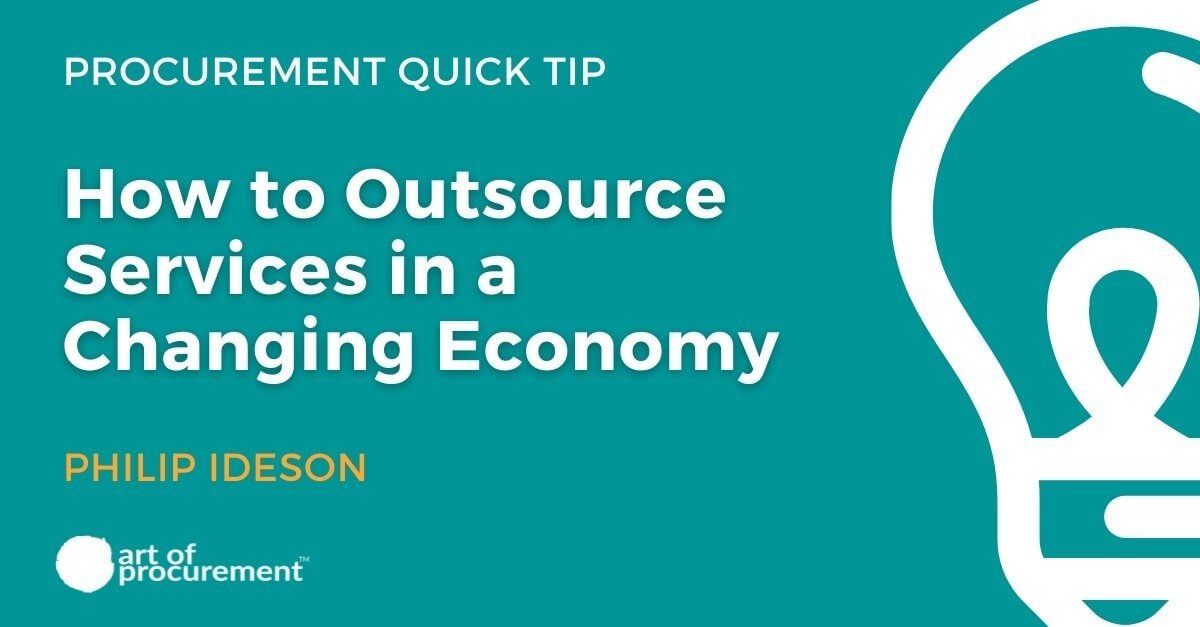
About five years ago, procurement outsourcing was all the rage. Companies would outsource sourcing and category management ‘en masse.’ It was sort of like selling procurement in a box.
Service providers would typically get really good initial results. They were able to take a fresh approach to spend that hadn’t been run through a formal procurement process before. Maybe they’d come across an organization that hadn’t previously utilized market intelligence, or one that just ran RFPs instead of building holistic category strategies. Having better insights and a more expansive bag of tricks really made a big difference – or so it seemed.
Unfortunately, those deals were often savings-based. Once the initial savings targets were realized, the contracts struggled to demonstrate ROI, even when the agreements were three to five years long. By the time the company reached the middle or the end of the contract term, they’d start to get renegotiated, and usually they would look a little bit different, focusing on different categories or perhaps a smaller, more agile delivery model.
I actually have a lot of experience in the procurement outsourcing world. I worked in India in 2007-2008 leading a captive shared service organization. After that, I was involved in outsourcing category management and sourcing in the early days of this model. I then delivered procurement services for Procurian and then Accenture (after Accenture acquired Procurian). Today, Art of Procurement actually has a procurement services offering called Experts on Demand.
Those were broad outsourcing deals. Today’s outsourced solutions typically target a specific spend category, specific deal, or a single part of the category management / sourcing process. It is a new twist – and a new opportunity – for procurement to strategically bring spend under management.
In an economy like the one we see today, procurement services do pretty well. When organizations are struggling, they have to look at laying people off and reducing headcount, but a budget may still exist for professional services. Professional services firms come in to fill the gap, doing the work that still needs to be done when the organization is reducing their employee costs and looking to move to more variable cost based organizational designs. Based on our current conditions, I think procurement services firms will become more important to procurement organizations over the next couple of years.
So, what are the best practices for using procurement services companies? From my perspective, there are three different approaches to consider:
- Use them as a SWAT team to support a company-wide expense management program. This is for when you’re looking at cost reduction and expense management on a programmatic basis. You need a number of experts to come in to help do that, but it’s not necessarily a long-term sustained model, so a third party is better than dedicated employees. At the same time, your external partner can help you build your own internal capabilities for when the larger engagement is finished.
- You can bring in a category expert to manage the entire procurement process from start to finish. Once the deal or the elements of the category strategy are done, that’s the end of their engagement. There is no need to employ those skills and knowledge on an ongoing basis.
- Subject matter experts can also provide support on a more surgical basis. For example, they can coach an in-house generalist procurement resource about the supply landscape – from the background. They can provide input on sourcing strategies, negotiating approaches, and contracting strategies.
There is no one-size-fits-all approach. In fact, on starting Art of Procurement, I created an assessment methodology to help procurement teams determine if using a procurement services partner would be a fit for them (it isn’t for everyone).
That being said, procurement services are going to play an ever-increasing role, especially in small to mid-cap companies. Those teams are likely to switch from being category subject matter experts to being more relational and account management focused. Somebody on the team must be focused on stakeholder relationships, bringing in experts as needed. That’s a model that I see as being more and more successful, combining the best of strategic, in-house relationship management with true category expertise.




